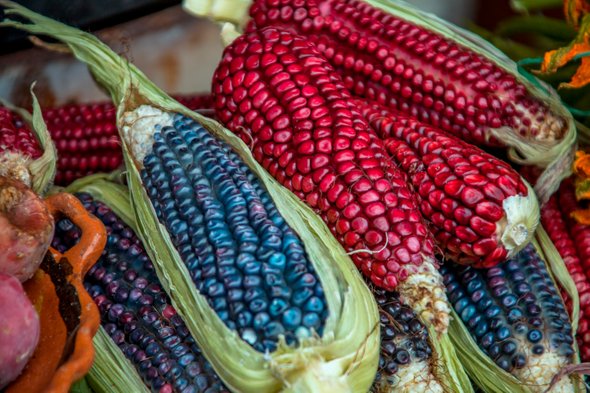
Food Security Including Pollinator Habitat
Conserving native plant communities protects our food supply. Native plants support wild pollinators that are essential to stable and secure production of foods and other crops. Native plant communities also are reservoirs of wild relatives of crop species and the genetic diversity they contain. This diversity is essential to stable crop production in the face of climate change, invasive species, diseases and other accelerating stressors.

Beetle pollinating an apple tree.
Humans cultivate only about 150 of an estimated 30,000 edible plant species worldwide, with only 30 plant species comprising the vast majority of our diets. Within these few species, genetic diversity has decreased as the number of marketed varieties has lessened. For example, out of more than 7000 varieties of apples grown in the United States in the last century, over 6000 varieties have become extinct. The result is a loss of agro-biodiversity, leading to a food industry that is more susceptible to threats and stressors, such as climate change, pests and disease, and more at risk of catastrophic losses.
History is riddled with examples of famine and tragedy brought on by loss of genetic diversity in staple food crops. The Irish Potato Famine of the 1840s devastated that country and killed over 1 million people when a fungus attacked their genetically homogeneous potato crop.
 When the U.S. corn crop was attacked by a fungus in 1970, the prevalence of a single corn variety contributed to the loss of over $1 billion worth of food. The global banana crop, a staple for many of the world’s poor, is currently at risk, for the second time, from fungi taking advantage of genetic homogeneity in that crop.
When the U.S. corn crop was attacked by a fungus in 1970, the prevalence of a single corn variety contributed to the loss of over $1 billion worth of food. The global banana crop, a staple for many of the world’s poor, is currently at risk, for the second time, from fungi taking advantage of genetic homogeneity in that crop.
Pollination services are also at risk from lack of diversity among pollinators. Currently, the collapse of farmed European Honey Bees, on which modern agriculture has overly relied, is threatening the pollination and therefore the production of foods and other crops. Many researchers recommend the conservation and restoration of native plant communities, and the diverse array of wild bees and other pollinators they support, as a way to provide more stable and secure pollination.
Examples and Additional information
United Nations Food and Agriculture Organization The State of the World’s Biodiversity for Food and Agriculture January, 2019.
The Value of Native Plants and Local Production in an Era of Global Agriculture — 2017 article in Frontiers of Plant Science

Photo from The Xerces Society.
Conservation of Crop Wild Relatives in the United States — 2018 by Stephanie Greene of USDA Agricultural Research Service
Where Our Food Crops Come From – International Center for Tropical Agriculture
Crop Science Journal Special Section on Crop Wild Relatives — 2017
Cornell University Fact sheet—wild pollinator online resources.
Researchers estimate that wild pollinators provide half of the crop pollination services worldwide. — 2018 National Science Foundation Research note.
Species turnover promotes the importance of bee diversity for crop pollination at regional scales — 2018 Science Magazine article
Climate Change Impacts on Global Food Security — 2013 Article in the Journal Science

